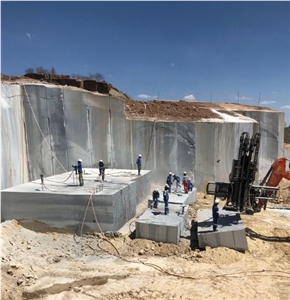Exploring Granite Quarries in South Africa Industry: From Quarry to Work of art
Exploring Granite Quarries in South Africa Industry: From Quarry to Work of art
Blog Article
Revealing the Mysteries of Granite Quarrying: Where Toughness and Elegance Meet
The world of granite quarrying is a world where the raw toughness of nature converges with human artistry to produce frameworks that stand the examination of time with an air of elegance. From the depths of quarries to the careful sprucing up in workshops, the procedure of transforming granite into architectural marvels is an intricate dancing of practice and innovation. As we peer into the depths of this old craft, we start to reveal the surprise intricacies that shape the very essence of our developed atmosphere.
The Beginnings of Granite Quarrying
In the record of building background, the beginnings of granite quarrying are shrouded in a tapestry of old workmanship and geological wonders. Going back to old Egypt and Mesopotamia, the removal of granite from quarries noted the start of a trip that would at some point bring about the production of several of the globe's most legendary frameworks.
Granite quarrying's origins can be mapped to the knowledgeable craftsmens that identified the rock's longevity and visual allure. Via a mix of primitive tools and sheer determination, these early quarry workers uncovered granite blocks that would certainly become the building blocks of worlds.
As civilizations evolved, so did the techniques of quarrying granite. The Romans, renowned for their design expertise, established sophisticated methods for extracting granite to create monoliths, temples, and roads that stood the examination of time.
The tradition of these ancient quarrying practices remains to form contemporary architecture, with granite continuing to be a sign of stamina and elegance in building and construction tasks around the globe. (granite quarries in south africa)
Devices of the Quarrying Profession
The development of granite quarrying techniques from old worlds to modern times highlights the essential function played by the tools of the quarrying profession in shaping the industry's techniques. In ancient times, quarrying tools were simple, usually containing chisels, hammers, and wedges made from materials like bronze or iron. These devices needed substantial manpower and time to remove granite obstructs from quarries.

Furthermore, the introduction of pneumatic tools and high-powered machinery has significantly reduced the physical labor required in quarrying procedures, enhancing worker safety and productivity. As the quarrying industry remains to introduce, the devices of the trade stay at the forefront of driving progress and shaping the future of granite removal.
Removing Blocks of Granite
Using precision equipment and advanced strategies, the extraction of granite obstructs from quarries has come to be an advanced process in the contemporary quarrying industry. Regulated blasting strategies are then used to break apart the granite right into manageable areas.

Sprucing Up and Completing Techniques
To attain a perfect surface on granite blocks, knowledgeable craftsmens employ a collection of precise polishing and completing techniques. After the first extraction visit and forming processes, the granite obstructs go through a comprehensive sprucing up phase to boost their natural elegance and toughness. One common approach used in brightening granite is diamond abrasion, where industrial rubies are used to grind and polish the rock to a smooth finish. This process not just produces a lustrous surface but also ensures harmony in color and appearance across the granite block.
In addition to sprucing up, ending up techniques are applied to additional improve the granite's appearance. These techniques may consist of flaming, sharpening, or brushing, each offering distinct structures and coatings to match various aesthetic preferences. Flaming, for example, includes subjecting the granite surface area to high temperature levels to develop a rough, textured finish, ideal for outside applications where slip-resistance is necessary. Sharpening, on the various other hand, gives a matte coating that is smooth home to the touch, perfect for indoor countertops and flooring. By thoroughly choosing and applying these polishing and finishing techniques, artisans can transform raw granite blocks into beautiful pieces that showcase both strength and elegance.

Ecological Impact and Sustainability
With the growing emphasis on ecological awareness in the sector, granite quarrying practices are increasingly inspected for their influence on all-natural sources and long-term sustainability. Additionally, the transportation of granite from quarries to processing centers Get the facts produces carbon exhausts, better contributing to environmental degradation.
To reduce these effects and make sure sustainability in granite quarrying, sector stakeholders are taking on numerous actions. Implementing advanced technologies to decrease energy usage and water usage, reclaiming quarried land for environmental remediation, and promoting accountable sourcing practices are some techniques being utilized. Certifications such as the Forest Stewardship Council (FSC) and the Management in Power and Environmental Style (LEED) assistance consumers recognize eco pleasant granite products.
Final Thought
In conclusion, granite quarrying is a procedure that needs specialized tools and strategies to essence blocks of granite and polish them to a high degree of finish. While the ecological effect of quarrying can be significant, initiatives are being made to enhance sustainability practices in the sector. In general, granite quarrying is a fragile equilibrium between taking advantage of the strength and style of this natural rock while reducing its impact on the atmosphere.
Report this page